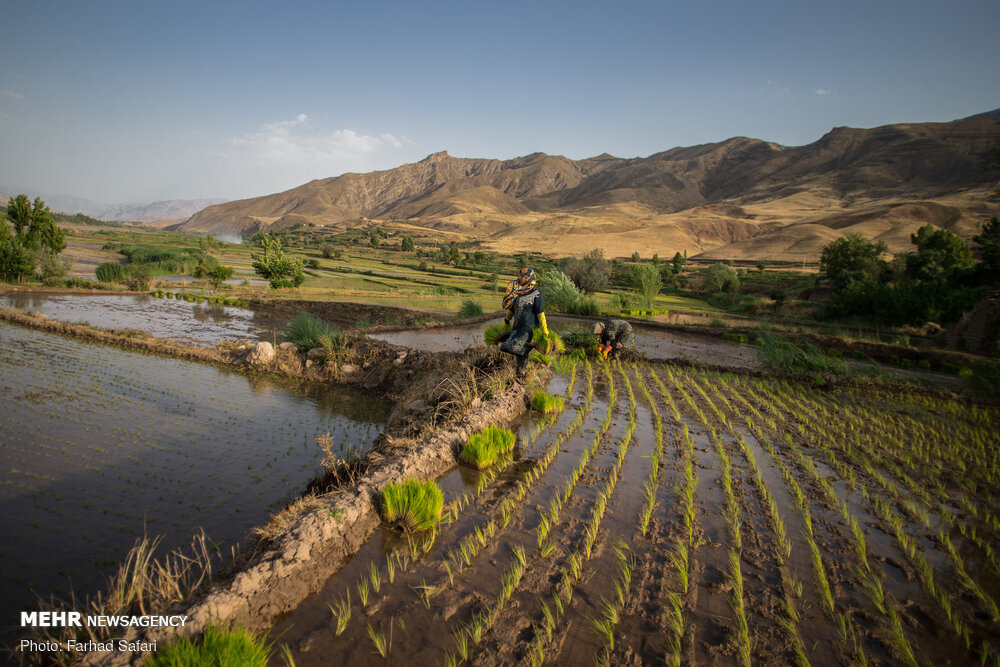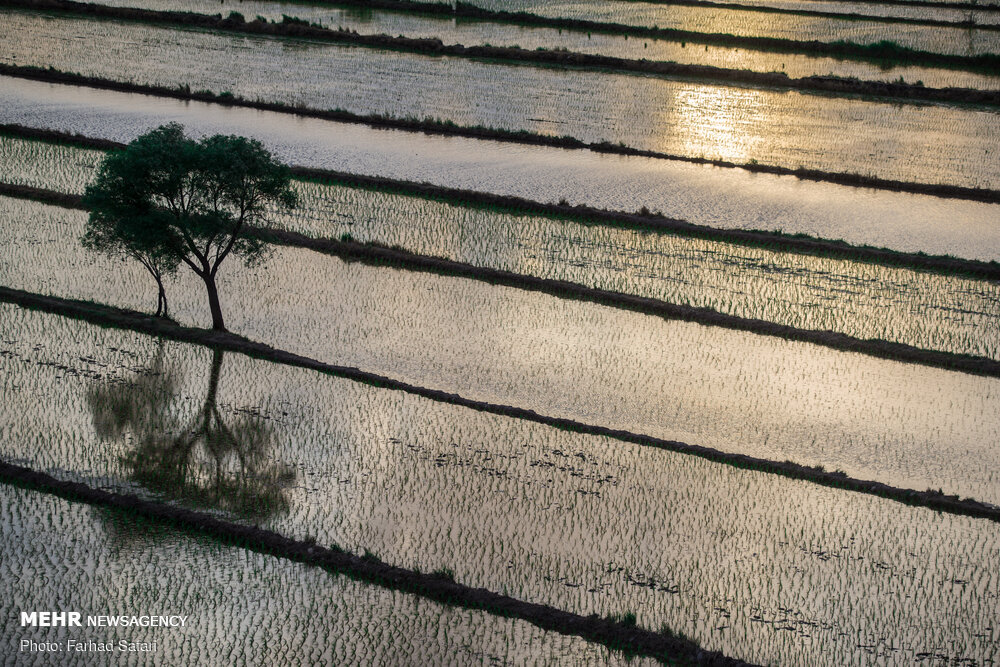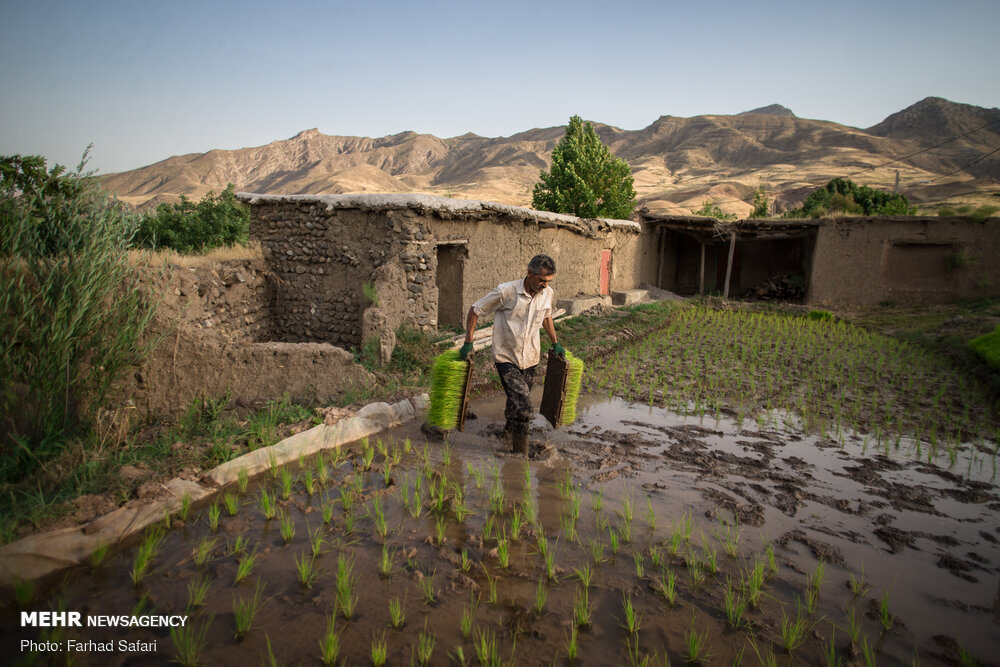Rice planting commences at paddy fields in Alamut

Farmers plant rice seedlings on paddy fields across Alamut, a semi-mountainous region in Qazvin province, west-central Iran, July 5, 2020.
Better known for being home to a well-fortified ruined castle and its lush cherry gardens, Alamut is however a place to rice paddy fields, covering some 40,000 ha of lands.
The fragrance of Iranian rice is distinct worldwide. The Iranian method of rice cooking is very different from those of other countries across the globe. It may seem to be a bit long and detailed, but the key tradition in the Iranian culinary is patience as many Iranians believe that making good food is an art.

Rice cooking in Iran also has a few tricks that you won’t find in other rice-loving nations. There are washing, boiling, draining, and finally steaming methods to cook your rice perfectly. For example, Iranians generally cover their rice with a damkoni (a fitted fabric pot-lid cover) when steaming it to prevent the vapor from escaping. Persian rice is best served immediately right out of the pot when it is still hot and buttery.

Some 2.9 million tons of rice were harvested in the country during the past Iranian calendar year of 1398 (ended on March 19), according to the Agriculture Ministry.

Alamut annually attracts hundreds of thousands of holidaymakers to the castle that once sheltering the followers of Hasan-e Sabbah (1070–1124), a leader of Ismaili sect, known as ‘Assassins’. In the early 1930s, British-Italian explorer and travel writer Freya Stark described her exploration of the place in her book “The Valleys of the Assassins”.
AFM/MG
